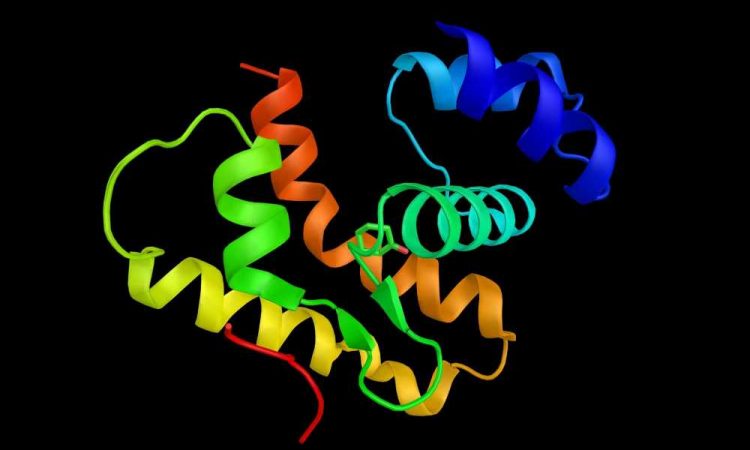In a recent study published in PLoS ONE, researchers investigated whether coronavirus disease 2019 (COVID-19)-associated chemosensory alterations were predictive of serological responses against severe acute respiratory syndrome coronavirus 2 (SARS-CoV-2) among United States (US) residents.

Background
Taste and smell alterations are associated closely with COVID-19 and might be related to a more indolent course of infection. However, data on serological immune response rates among mild COVID-19 patients are limited.
About the study
In the present cross-sectional study, researchers characterized the development of anti-SARS-CoV-2 spike (S) protein IgM (immunoglobulin M) or IgG titers among SARS-CoV-2-positive individuals with taste and smell loss for exploring clinical COVID-19 symptoms that could most strongly predict robust serological responses.
The study was conducted between April and June 2020 on 306 adult COVID-19 convalescent individuals who volunteered for blood donation following perceived SARS-CoV-2 infection. The individuals were enrolled for CPT (convalescent plasma trials) at the Irving medical center of the NewYork-Presbyterian/Columbia university following a recent history of COVID-19.
The polymerase chain reaction (PCR)-confirmed SARS-CoV-2 serological status, clinical COVID-19 symptoms experienced at the time of infection, and the course of treatment was documented at the time of serological analysis. The chemosensory function was evaluated based on patient-perceived deficits. The anti-S IgG and IgM titers were measured using enzyme-linked immunosorbent assays (ELISA) and represented durable and primary humoral responses, respectively.
Included individuals had prior COVID-19 history, had ≥2.0 weeks following resolution of acute COVID-19 symptoms, and did not show any signs of active SARS-CoV-2 infections at the time of blood donation, based on chest radiographs, pulse oximeter findings, or mechanical ventilation needs. The study participants were seronegative for infections transmitted by blood transfusions [such as those caused by HBV (hepatitis B virus), HIV (human immunodeficiency virus), WNV (west Nile virus), hepatitis C viruses (HCV), HTLV-I/II (human T-lymphotropic virus types I and II), Zika virus, and Trypanosoma cruzi).
The team excluded individuals who had received antiviral therapy within 24.0 hours of blood donation, needed extracorporeal membrane oxygenation or mechanical ventilation for ≥5.0 days, had severe multiorgan dysfunction, pregnancy, IgA deficiency, or prior history of allergy reactions after blood transfusions. All participants filled out surveys evaluating (i) the subjective taste and smell function at baseline and during SARS-CoV-2 infection; (ii) symptoms included in SNOT-22 (Sino-nasal Outcome Test-22) rhinology domain; (iii) COVID-19-associated symptom history; and (iv) SARS-CoV-2 testing history.
Results
Drug Discovery eBook

Initially, 2,915 individuals were screened from the convalescent plasma trial cohort, of which 1,556 were eligible to fill out chemosensory dysfunction questionnaires. However, 1,495 individuals consented to participate and filled out the questionnaires, of which only 306 individuals were eligible for blood donation and successfully donated blood.
Among the 306 study participants, 196, 195, and 177 individuals documented reported subjective smell, taste, and simultaneous chemosensory (smell and taste) dysfunction, respectively, during the initial 14 days of SARS-CoV-2 infection. The median value for the participants was 39 years, 64% (n=196) of them were women, and 86% were Whites.
Prior to data adjustments, the odds of developing suprathreshold IgG titers were 2.0-fold greater among individuals who documented smell alterations and 2.02-fold greater among individuals who documented taste alterations in comparison to individuals with normal taste and smell. Multivariable logistic modeling with data adjustments for age, sex, age, ethnicity/race, duration of symptoms, smoking habits, and comorbidities index scores showed that altered taste, and smell could significantly predict positive anti-S IgG humoral response [smell odds ratio (OR) = 1.9; taste OR = 2.0].
Among 187 answers valid for smell dysfunction assessment, 135 (72%), 37 (20%), three (2.0%), and 10 (five percent) answers pertained to absent, greater, lower, distorted, and odd smell perceptions, respectively. Among 266 individuals with complete IgG data, detectable anti-S IgG titers were observed among 66% (n=176). A significantly greater proportion of females (79%) were SARS-CoV-2 seronegative.
A significantly greater proportion of participants (72%) with smell and taste dysfunction (71%) showed positive anti-S IgG titers than SARS-CoV-2 seronegative responses. The male gender was a significant predictor of positive anti-IgG humoral responses (OR = 2.8) after olfactory adjustments. The humoral responses did not significantly differ by age, ethnicity/race, hospital admissions, smoking habits, and COVID-19 duration.
Overall, the study findings showed that subjective chemosensory dysfunction, such as self-documented taste or smell dysfunction, could strongly predict serological responses to SARS-CoV-2. The findings might be useful for patient counselling. However, future longitudinal studies must be conducted to improve understanding of symptom onset and duration of the serological responses in SARSC-CoV-2-positive individuals.
- Overdevest JB, Irace AL, Mazzanti V, Oh EJ, Joseph PV, Devanand DP, et al. (2022). Chemosensory deficits are best predictor of serologic response among individuals infected with SARS-CoV-2. PLoS ONE. doi: https://doi.org/10.1371/journal.pone.0274611 https://journals.plos.org/plosone/article?id=10.1371/journal.pone.0274611
Posted in: Medical Science News | Medical Research News | Disease/Infection News
Tags: Allergy, Blood, Blood Donation, Convalescent Plasma, Coronavirus, Coronavirus Disease COVID-19, covid-19, ELISA, Enzyme, HBV, Hepatitis, Hepatitis B, Hepatitis B Virus, Hepatitis C, HIV, Hospital, Immune Response, Immunodeficiency, Immunoglobulin, Membrane, Polymerase, Polymerase Chain Reaction, Pregnancy, Protein, Respiratory, Rhinology, SARS, SARS-CoV-2, Severe Acute Respiratory, Severe Acute Respiratory Syndrome, Smoking, Syndrome, Virus, West Nile Virus, Zika Virus

Written by
Pooja Toshniwal Paharia
Dr. based clinical-radiological diagnosis and management of oral lesions and conditions and associated maxillofacial disorders.
Source: Read Full Article
